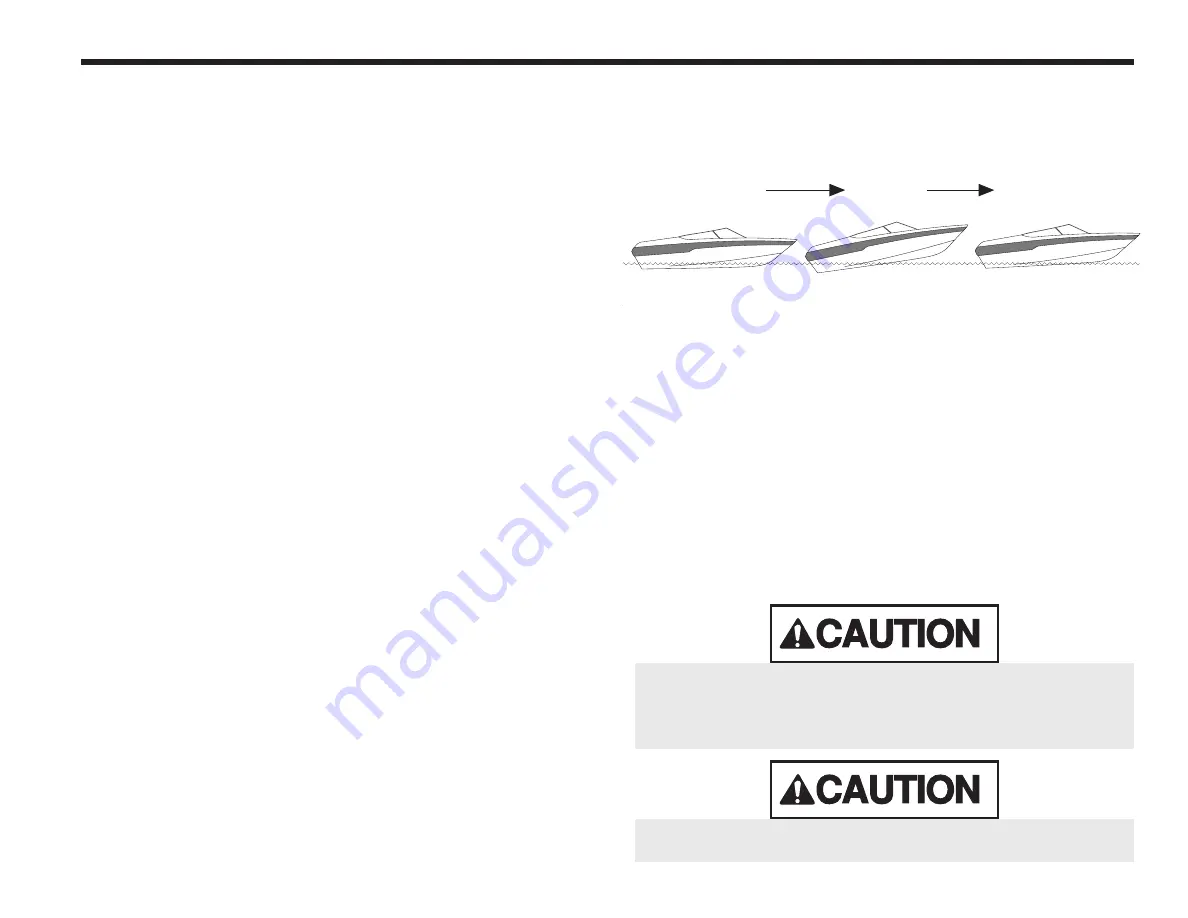
7. Warm up a cold engine by running it at fast idle speed (as
recommended in engine manual) approximately one to
two minutes.
Leaving the Dock
After the engine has warmed up, you are ready to leave the dock.
Before you cast off, check all gauges, particularly the oil pressure
gauge, for proper readings. Check the operation of the steering by
turning the steering wheel to full port and to full starboard while
observing outdrive movement. Check that charging system is work-
ing properly. Check again for fuel, oil, and exhaust leaks.
When you are sure your boat is ready, check wind, tide, current or
other forces that will affect the way you maneuver your boat away
from the dock. Then cast off mooring lines and stow fenders.
Shift your boat’s engine into forward or reverse depending on
whether you want to move the bow or the stern away from the dock
first. Move the throttle lever to neutral position. Then push forward
quickly and firmly to shift into forward gear or backward to shift to
reverse. Your engine should be running at a slow speed as you
move away from the dock. If you move the bow out first, watch that
the swim platform does not swing into the dock or a piling.
Getting Up To Cruising Speed
After slowly motoring from the dock area to open water, you can
safely accelerate to cruising speed. Advance throttle to setting
which provides your desired engine speed (RPMs). As you move
the throttle forward, engine RPMs increase, and your boat moves
faster through the water.
Important: Acceleration at full throttle is not recommended
during the engine “break-in period.” This “break-in period”
coincides with the engine “20-hour check-up.” Do not attempt
full throttle acceleration during the first 20 hours of operation.
When you throttle up and accelerate, your boat increases the trim
angle and causes the boat to ride bow-high. From a maximum
angle, the boat levels out to its planing attitude as you continue to
accelerate. (Figure 5.2).
The maximum angle is commonly known as the “hump.” You
should get over the hump as quickly as possible because visibility,
handling, and performance are limited until you do. Only a few
seconds at full throttle should be needed; however, the way your
boat is loaded, the wind, and sea conditions affect the time
required. When the boat gets over the hump, it reaches its planing
attitude. Then, accelerate until your boat reaches a comfortable
plane and then throttle down to cruising speed. This also provides
for better fuel efficiency.
When maneuvering at low speeds you can reverse (move throt-
tle forward or aft) the shift mechanism. This will react in a
braking action.
5-9
BOW RISES
PLANING ATTITUDE
ACCELERATE
Figure 5.2 Boat Acceleration and Attitude
CAUTION:
When shifting between forward and reverse, always
pause in neutral for a few seconds before reversing the rotation
of the propeller. This will prevent unnecessary damage to the
drive system.
CAUTION:
High speed acceleration in reverse can create a
wake that could wash over the transom and flood the boat.
Summary of Contents for SSX-236
Page 1: ...S S X 2 3 6 2 5 6 2 7 6 2 0 0 9 O W N E R O P E R AT O R M A N U A L...
Page 2: ......
Page 4: ......
Page 17: ...1 7...
Page 18: ......
Page 22: ......
Page 24: ......
Page 40: ...2 16...
Page 52: ...3 12...
Page 80: ...5 16...
Page 98: ......
Page 106: ......
Page 112: ......
Page 113: ...WIRING SCHEMATICS 12 12 1 236 SSX...
Page 114: ...12 2 236 SSX...
Page 115: ...12 3 256 SSX...
Page 116: ...12 4 256 SSX...
Page 117: ...12 5 276 SSX...
Page 118: ...12 6 276 SSX...
Page 119: ......
















































